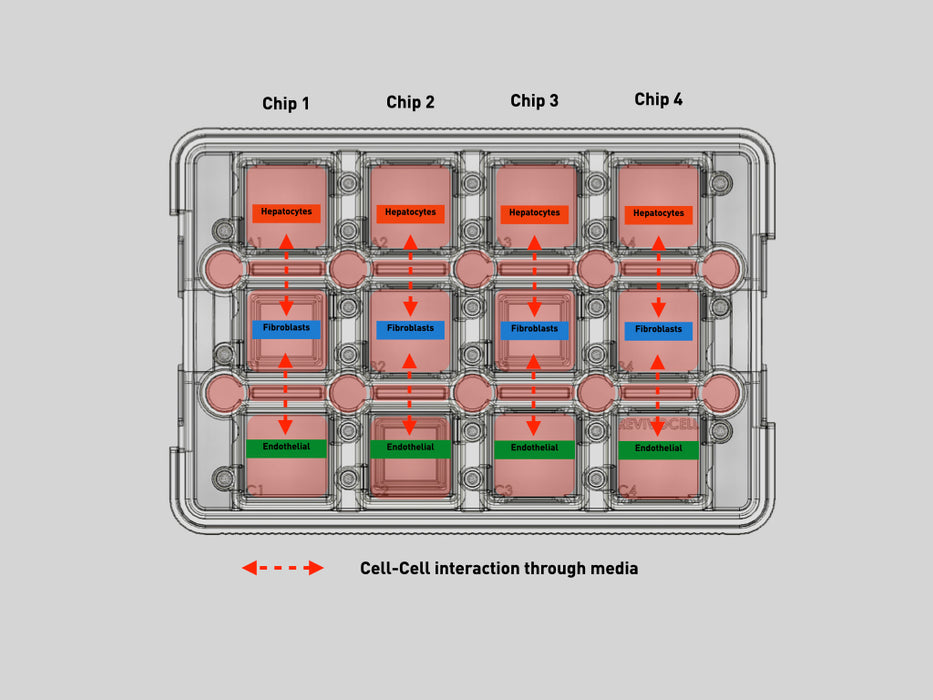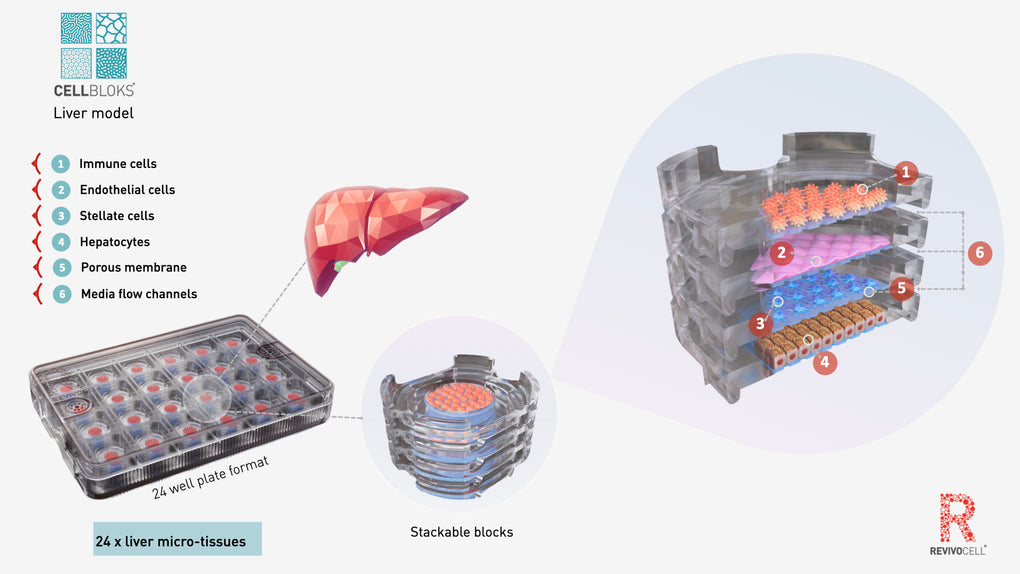In drug discovery, high rates of drug attrition in clinical trials suggest there are limitations in current prediction capabilities of present preclinical models (both in-vitro models and animal studies). CELLBLOKS® is a multi-organ/cell type modular “plug and play” technology can simulate complex huma-relevant organ microenvironments in a standard in-vitro setting with ease. In drug discovery this technology can help identify and validate most promising drug candidates and understanding their toxic liability before reaching clinical trials, and such prioritising candidates with least-safety concern early in discovery, resulting in earlier patient treatments and increased Pharma R&D productivity.
CELLBLOKS® Liver-on-a-chip models for toxicity screening
Drug-induced liver injury (DILI) continues to be the leading cause of attrition during drug development in all phases of clinical trials as well as the number one cause of post-market drug withdrawal. CELLBLOKS® liver-on-a-chip models are the only platforms in the market that are industry compliant, hight-throughput and in-vivo relevant, containing precise spatial and 3-D structural arrangement of different cell types enabling cell-cell communication and in-vivo like metabolic function essential for predicting adverse drug effects. We can generate high quality and human-relevant data rapidly and in cost-effective manner.
Toxicity testing models available
CELLBLOKS® 2D layout Liver-on-a-Chip model
This CELLBLOKS® kit contains readily grown physiological relevant liver micro-tissues constituting different cell types of the liver grown adjacent to each other enabling in-vivo relevant cell-cell iterations constituting metabolic function essential for predicting adverse drug effects in your lab.

CELLBLOKS® 3D stack Liver-on-a-Chip model
This models contains 24 individual liver-chips per plate. Each chip consists of multiple liver cell types grown in layered scaffold blocks, arranged in close proximity in a 3D stacked format and is ready to be exposed to test drugs


